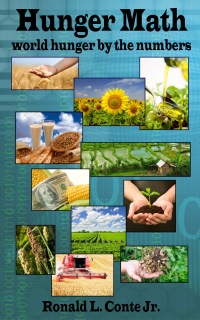There are only two reasons High-Fructose Corn Syrup exists at all.
High-Fructose Corn Syrup (HFCS) is a sugary syrup made from the starch in dent corn (a type of flour corn). How do you turn corn starch into sugar? It’s a complex chemical process. Here’s an overview. How can such a long complex and rather expensive process be commercially successful, given that the result is a mere commodity, a type of sugar? There are only two reasons:
(1) U.S. government price supports for corn (maize),
and
(2) import quotas and tariffs on sugar.
The United States is currently under a severe drought. Actually the U.S. drought monitor uses a system for rating the dryness of agricultural land, which goes up from severe:
D0 — abnormally dry
D1 — moderate drought
D2 — severe drought
D3 — extreme drought
D4 — exceptional drought
Right now over one third of the continental U.S. is under a severe drought or worse.
Which crops do you think farmers would choose to grow during a longstanding severe drought? Maize (corn) is one of the thirstiest commodity crops, more than other grains and much more so than a drought-tolerant crop like peanuts. And yet farmers continue to plant corn over vast amounts of land.
Why? It is because the U.S. crop insurance program is so “generous” that they cannot lose money growing corn. Even if the drought devastates their crop, they can just plow it under and take the insurance money. Most insurance systems take in more money than they pay out; otherwise, they would go bankrupt. but the U.S. crop insurance program pays out billions more than it takes in, year after years. So it is not really insurance, but a government price support.
And that price support makes it cheap and financially safe to grow corn. If farmers actually had to take a loss when drought or some other problem harms their crop, they would have to get more money from whatever corn did make it to harvest. But the commodity price of corn in the U.S. is lower than it should be because billions in tax payer money has been funneled to farmers who grow corn.
That’s one half of the High-Fructose Corn Syrup (HFCS) pricing equation. HFCS is cheaper than it should be because it is made from corn, which is cheaper than it should be.
The other half is the commodity price of sugar in the U.S. Import quotas for sugar from overseas and tariffs on those imports make the commodity price of sugar much higher in the U.S. than on the world market. At times, the price in the U.S. is nearly double that of the world market price.
If a company paid a fair price for corn, and then sold their HFCS on the world market, in fair competition with sugar from beets and sugarcane, they would quickly go bankrupt. The price of HFCS would be much higher than other forms of sugar. And High-Fructose Corn Syrup (HFCS) is not really more desirable as a food ingredient. It is mainly the price that drives food manufacturers to HFCS. So HFCS would not be a commercially-viable product except for (1) the artificially low price of corn in the U.S., and the artificially high price of sugar in the U.S.
To rid ourselves of HFCS, we need only change our farm policy to scale back the price supports for corn, and do away with the protectionist tariffs and quotas for sugar.

